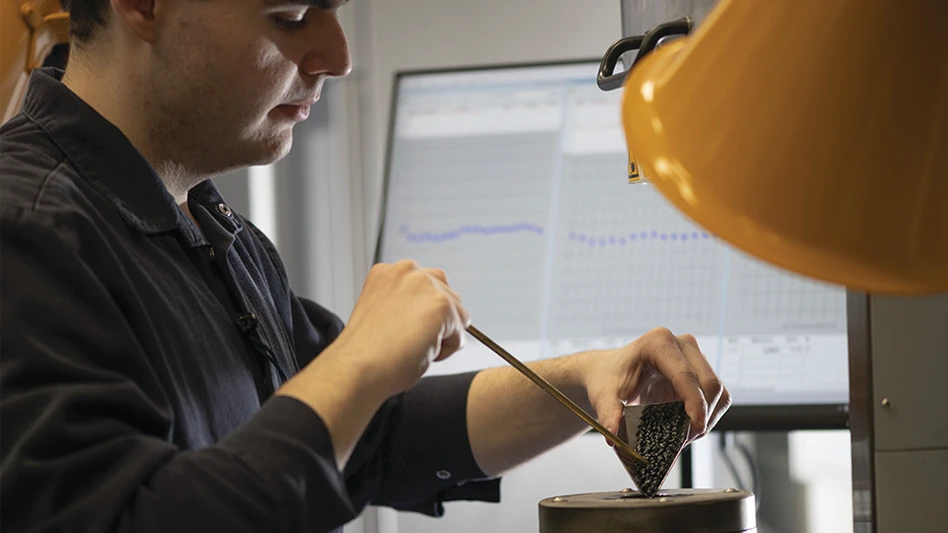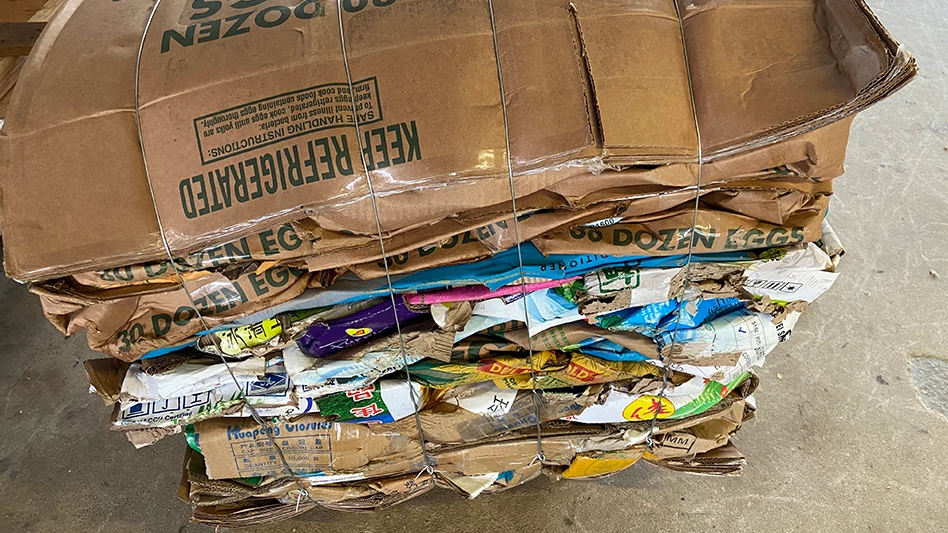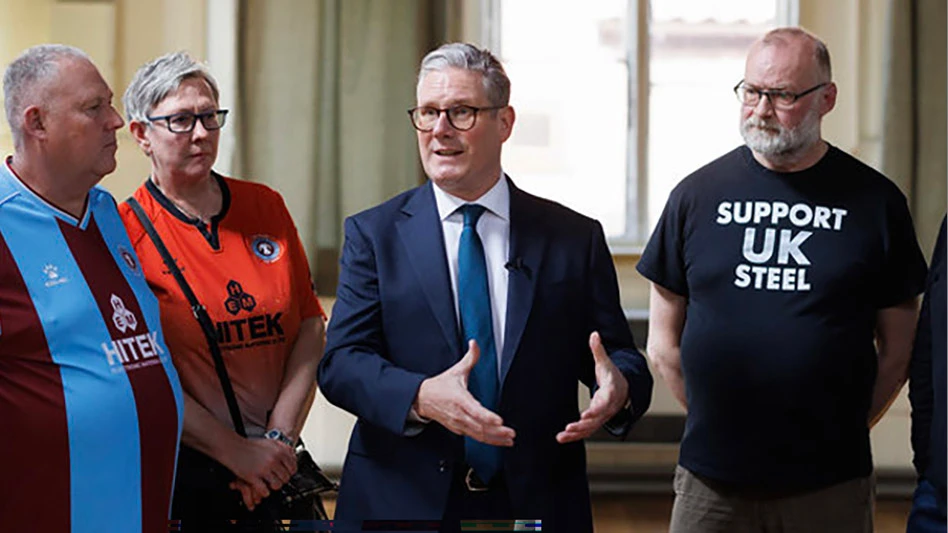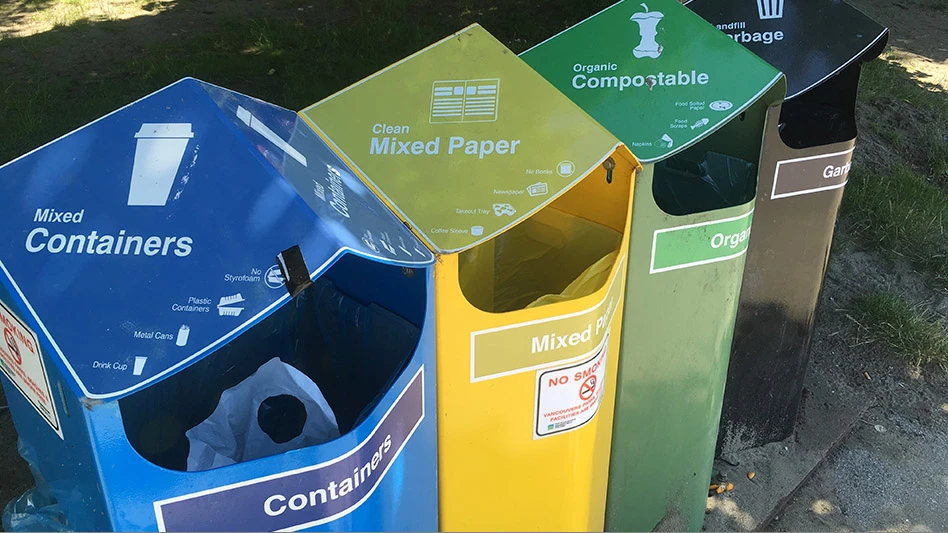When asked recently for an outlook on the ferrous scrap market, as usual many ferrous scrap processors begged off, saying they did not have either a crystal ball or tea leaves to accurately predict the future. And, a number added, if they could, they would have gone to Las Vegas and made their fortune.
This opinion hammers home the point that ferrous scrap is a commodity like any other. As a commodity, ferrous scrap is influenced by a host of factors, including durable goods sales, new steel production, new auto sales and new housing starts, among many others. In addition, ferrous scrap's price and demand is affected by the world economy, making it even more difficult to forecast.
Having said that, many of these same processors expressed optimism that ferrous scrap markets are showing some very favorable signs. These signs should carry through the next several quarters. Steel demand from domestic sources remains strong, and prices appear to be stabilizing.
This market strength is coming while significant changes are taking place in the structure of the industry.
FERROUS EVOLUTION
Consolidations and acquisitions are making the traditional scrap processing industry look more like many other sectors in the U.S. economy. A number of publicly traded companies are taking an unprecedented look at acquiring more small and mid-sized operations. Philip Environmental, Hamilton, Ontario; Metal Management Inc., Chicago; and Recycling Industries Inc., Englewood, Colo.; have formed a pantheon of companies looking to grow their operations through aggressive acquisitions throughout North America. These three join a handful of other publicly traded scrap processing operations, including Schnitzer Steel Industries Inc., Portland, Ore.; and Commercial Metals Co., Dallas.
Philip Environmental has been one of the most active in expanding and growing its scrap processing business. "The consolidation of the market is heating up," says Robert Waxman, president of Philip’s Metals Recovery Group. "Over the next 6 to 12 months, there will be even more consolidation."
A key reason for the consolidation in the ferrous scrap industry is the escalating cost of environmental compliance. According to a number of scrap processors, the costs to operate within existing environmental laws continue to soar unabated. These costs, according to one Southern scrap processor, do not show any signs of slowing.
For those who are looking to stay competitive, there is also the continual need for companies to upgrade their equipment, making them more efficient. Waxman notes he has seen a number of facilities install mega-shredders. He questions how some of these shredding operations will be able to get enough material to cost justify their purchases.
With publicly traded companies becoming more active, there are also concerns about the viability of smaller operations. The ability of these smaller and mid-sized operations to compete in the market place will be a key for survival, and even that, according to a number of vendors, is still uncertain.
Vicki Ray Roche, a trader with Cozzi Iron & Metal, Chicago, a company which has been bought by Metal Management, feels there isn’t much of a future for many of these operations. Some may end up as feeder yards for larger operations. Many others are having problems competing in the marketplace, and will be taken over or get out of the business.
This less-than-optimistic outlook, however, is not shared by all. One large Midwestern processor questions the rationale behind some of the recent acquisitions. "Strong companies should focus on strong companies," he says. "Some (large companies) will make it, and others won’t."
Still another scrap processor sees a future for the independent scrap processor. "It’s an entrepreneurial business," he says. "I don’t see how a large company that has offices throughout the United States can keep tabs on the whole marketplace."
DOMESTIC STRENGTH
By all indications, the domestic steel industry is moving at a good clip. Prices have been firming up, and supply and demand remain in balance. Even with a number of strikes at steel mills cropping up, new capacity startups have been pulling a significant amount of material in regions throughout the country.
The start of the Trico Steel mill in Decatur, Ala., as well as the operation of the Nucor steel mill in South Carolina are adding to the strength in the steel industry at the present. Other regions of the country also are seeing some better-than expected market conditions, with mills running at close to full capacity, when taking into consideration the number of mills closed because of strikes.
According to a key executive at a large Midwestern-based ferrous scrap company, the market is benefiting from a strong economy, as well as strong scrap demand, both of which are keeping prices stable. The steady movement of material domestically is keeping more material from heading offshore.
With these changes, the market for ferrous scrap has been gaining strength. Scrap processors across the U.S. point to the strong operating schedules of the domestic steel industry as a driving force for the recycling industry. "One thing we see is that with so few players and stable markets, the higher the prices, the further the mill will go to reach the dealers," says Dennis Bloch, vice president and general manager of the Scrap Division for Bloch Steel Industries, Seattle.
Scrap processors in other regions of the country echo these statements. Robert Bonnes, a ferrous buyer with Camden Iron & Metal, Camden, N.J., says markets are improving. A recent uptick in export activity on the East Coast is helping the situation. The export market is benefiting from European steel mills running fairly good schedules, he says, and Asian mills also running strong schedules.
"With European steel mills running at a fairly good clip, there is less material available for the Asian market," Bonnes adds. "The result is greater buying of materials from U.S. sources."
Michael Coslov, chairman and CEO of Tube City, Glassport, Pa., also sees improvements in the ferrous scrap market. While acknowledging recent orders off the East Coast, he notes a significant amount of material from the Northeast is moving down the Atlantic Coast into mills in the Southeast. This movement should continue with a growing number of steel mills looking to locate facilities in this area. Chaparral Steel recently announced it is looking to build a new steel mill in the eastern U.S., specifically at the Southeastern part of the region, according to Dennis Beach, a representative for Chaparral Steel, Midlothian, Texas. The Carolinas are particularly attractive.
Roche also cites a great amount of scrap traveling down from the Northeast into many of the newer steel mills that are opening up in the South. While Northeastern scrap yards are benefiting from the growth in scrap ferrous demand from sources in the Southeast, there continues to be strong demand from Midwestern sources, as well as steel mills that are on internal waterways.
Many of the newer steel minimills are geared to produce a rolled steel product. This steel grade requires a much cleaner grade of ferrous scrap. With the demand for this low residue scrap increasing, the question of whether or not there will be a shortage of the grade has arisen. However, most scrap processors do not expect to see any shortages of quality scrap.
"There has always been talk about shortages," says Waxman. "However, we are confident the economics will always allow material to be available."
A GLOBAL COMMODITY
Of course, the success of the ferrous scrap market in the U.S. is aided by overseas orders. While there are only a few companies on both the East and West Coast that have enough size to have any major influence on the export market, until recently there was quite a bit of export activity. This has declined in recent months due to increased domestic demand and the relative strength of the U.S. dollar.
With the dollar strong in comparison to foreign currencies, it becomes more expensive for companies overseas to buy material from the U.S. While only a handful of companies have a direct line to the overseas market, scrap processors throughout the country feel the impact.
If exports drop, processors who had shipped the material offshore turn around and begin selling the scrap domestically. This in turn creates additional supply onto the domestic market, which could weaken the price for the material.
At the same time, a change in traditional scrap flows is currently underway, with more scrap that was traditionally exported being diverted to domestic consumers.
Despite the overall decline in scrap ferrous exports, recently there were a number of large orders placed for Asia, specifically Korea. These orders came both off the East and West Coast. The impact has been somewhat positive.
While the export market has shown some strength, domestically the situation is much stronger. New capacity is coming on line, which is resulting in stronger demand for the raw material intake.
In addition to the new facilities, there are a host of additional plants that have either announced plans to build facilities or are already constructing projects.
Robert Draper, export manager for Commercial Metals Co., Dallas, notes that the export market has slowly been declining over the past several years. While acknowledging the strength of the U.S. dollar as a factor, he is more inclined to attribute the move to stronger running schedules for domestic mills that are giving many potential exports greater incentive to keep their material local.
"There is very little export movement out of the Gulf of Mexico area," Draper says. "When Nucor’s new plant gets running up to capacity, there will probably be a drop in the amount of material being exported from the Mid-Atlantic region."
What will end up happening, Draper adds, is that eventually there will be only two exporting regions, the West Coast and the Northeast.
While exports have been tailing off, there are some signs of an increase in the amount of ferrous scrap being imported into the country. With many of these new mills requiring low residual scrap ferrous to meet more exacting standards for flat rolled steel products, there has been additional movement of scrap from outside North America. In addition, there will be increased imports of materials such as direct-reduced iron as more mills look to start blending in scrap substitutes to get the low-residual raw materials required.
Gary Schnitzer, executive vice president and general manager of the Schnitzer Steel, Oakland, Cal., facility, feels export markets are in better shape than they have been. This situation is one of the key reasons for the upbeat attitude Schnitzer has for the industry over the next several quarters. "There is a much stronger market in Asia right now," he says. "We are seeing a pickup in shipments to Korea and throughout Southeast Asia."
As for the consolidation of scrap processing businesses, Schnitzer feels it will be an improvement and that it will ultimately make the industry healthier. "Stronger players bring efficiencies to the market, so it is helpful for the industry," he says.
Other observers say the trend toward consolidation will be ongoing. Larger companies will continue to seek out small and mid-sized companies to acquire. Meanwhile, steel mills will continue to demand higher quality scrap. According to a number of companies, this will give scrap processors an extra incentive to be proactive in their businesses. For companies such as Tube City, this means offering a host of services to the steel mills, as opposed to just delivering scrap to their consumers.
Tube City’s Coslov stresses the need for a close working relationship between the supplier and the mill.
"A good broker can deliver a value-added service to the consumer," says Coslov. "They can buy the most efficient scrap, arrange the best transportation, and advise on the best blend of material for the furnace."
Waxman agrees with the new dynamic in the industry, there is greater attention to the working relationship between buyer and seller. "Most domestic players have affiliations with certain mills," he says.
Going even further, many scrap processors have set up operations to completely run the scrap end of steel mills’ operations.
PRICE STABILITY
While some processors believe new capacity, tightened supply and higher prices for finished products all could drive the ferrous scrap prices up, others are skeptical. Although there has been a modest strengthening in the ferrous scrap market over the past several months, ferrous scrap prices have remained fairly stable, and some observers say they will remain that way.
One factor keeping the price of scrap down will be growth in the use of scrap substitutes such as direct reduced iron, hot briquetted iron, and pig iron.
"There are lots of iron ore units coming from South America, as well as pig iron," a Midwestern scrap processor notes. "With the present situation, there are price ceilings and floors that will prevent scrap prices from moving too far out of control."
Fundamentals are the basis of any commodity market, adds Coslov. When these fundamentals are disregarded, abnormal activity may occur.
"When prices begin to slide, many times consumers will back away and create a fictitious market the following month, which sometimes will bring the price back up," Coslov adds. "When markets pick up, more DRI and pig iron is brought into the mix. Markets always need a reason to move. But we must question whether the fundamentals are changing or whether changes are merely based on an emotional reaction."
Roche agrees that the use of scrap substitutes will keep scrap prices from swinging too sharply either way.
Scrap consumers also feel upbeat about the next several quarters for the scrap and steel industry. Despite some disruptions caused by strikes at a number of steel mills, as well as other problems, there continues to be strong demand for the material from throughout the country.
Domestic orders remain strong, which has helped keep the market consistent.
Jim Cowen, general manager of North Star Steel’s Kingman, Ariz., steel minimill, sees stable markets for ferrous scrap for the near future. The mill pulls material from throughout the West. Even with talk of increases in the export of ferrous scrap off the West Coast, Cowen feels that the ferrous scrap needed by the mill will be enough to make the mill’s finished product – concrete reinforcing beams and other construction-related steel products.
Down the road, there appear to be further signs that prices will continue to hold, and demand will continue to grow. Regardless of the future of the overseas market, most U.S. ferrous scrap processors feel that the industry will continue to show steady market conditions.
On the down side, continued pressure to meet tightening environmental standards, and increased competition for material is making the industry a more difficult place to operate.
The author is senior editor of Recycling Today.

Explore the June 1997 Issue
Check out more from this issue and find your next story to read.
Latest from Recycling Today
- Commentary: How EPR is transforming the packaging industry
- Acerinox names new North American Stainless CEO
- Greenwave closes 2024 books with red ink
- Steel Dynamics nets $217M on record shipments
- Massive Chinese steelmaking rebound recorded in March
- LME looks into sustainable metal pricing
- OnePlanet Solar Recycling closes $7M seed financing round
- AMCS launches AMCS Platform Spring 2025 update






